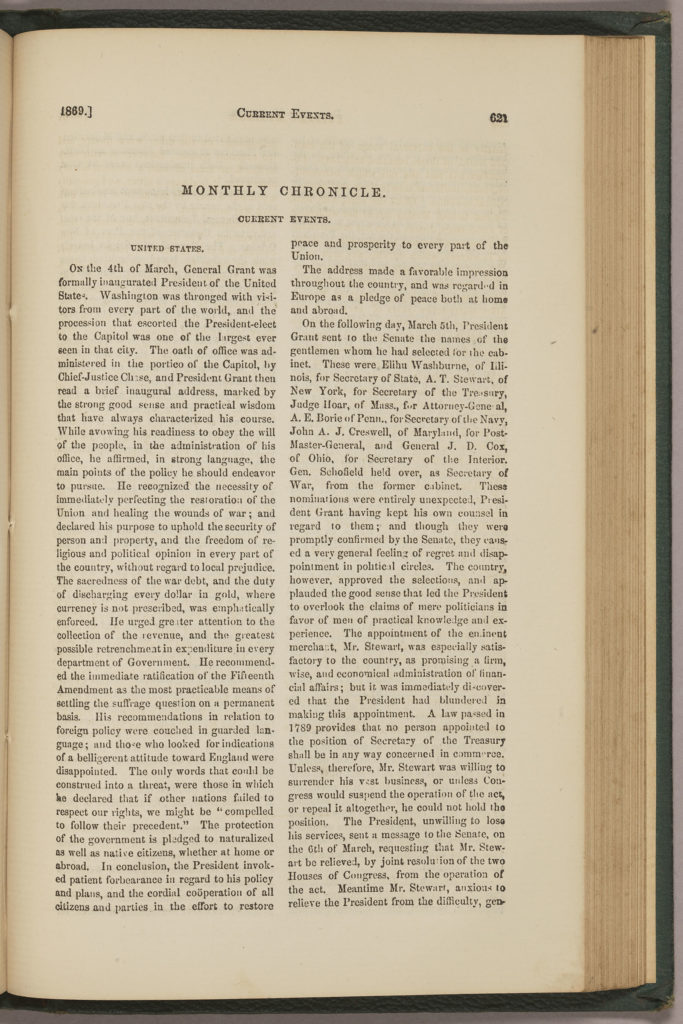by Sara Weber, Special Collections Digital Project Specialist
Living as we do in a world of live broadcasts and instant social media, it can be hard to remember just how long it could take information to reach parts of our nation in earlier days.
In last week’s post, we shared two letters from Special Collections written by James Monroe Meek to his wife Elizabeth in March 1869, focusing on his description of the events surrounding the first inauguration of Ulysses S. Grant as President of the United States. At the start of the first of these two letters, Meek indicates to his wife that he had received on the previous evening (March 3rd) a letter that she had written February 28th. This transit time is as good as—or perhaps better than—what we would expect today.
For those without a family member or friend to write home, there were of course various serial publications that conveyed the news of the world to the world. By the second half of the nineteenth century, newspapers typically covered such a significant event as an inauguration fairly quickly, thanks to recently expanded telegraph lines and railways—at least for those living in a city served by those technological advances.
Those who relied on magazines for their news might be in for a rather longer wait. For example, a write-up of Grant’s inauguration appeared in the March 20th issue of Harper’s Weekly. In our own collection, we find an even later description. The inauguration of March 1869 did not appear in the “Current Events” section of Putnam’s Magazine: Original Papers on Literature, Science, Art, and National Interests until their May 1869 issue!

